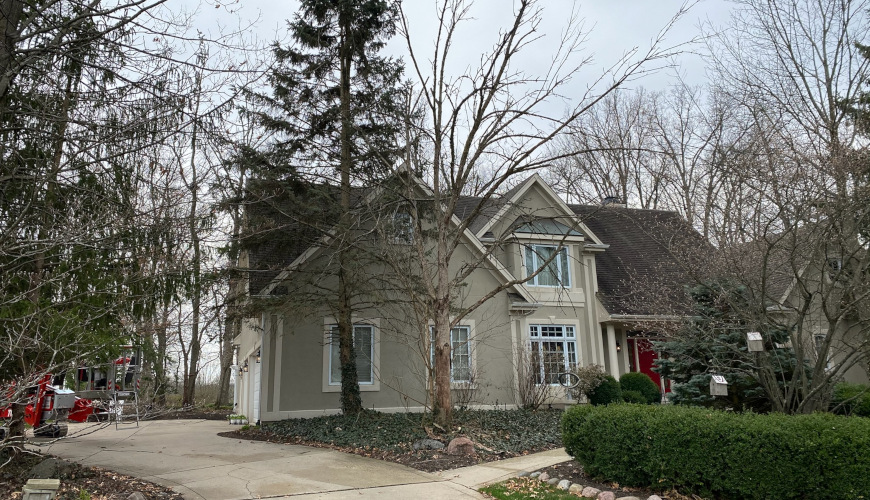A dying tree can lead to a number of complications on your property. The tree may fall, which can severely damage anything in its path. In addition, if the tree is diseased or infested, it can spread these hazards to any nearby trees. That means one dying tree can become many. Luckily, a dying tree doesn’t mean your property is doomed. Actually, you can often save your struggling trees.
In this article, we will describe how to recognize and how to save a dying tree. We will also let you know what to do when you discover that a tree on your property is dying. Ready to learn more? Let’s get started.
Signs of a Dying Tree
Here are many ways to tell that your tree may be dying:
- Shedding or brittle bark
- Many falling sticks
- Visible rot & fungus
- Branches missing leaves
- Termites & other pests are present
- Damaged root systems
- Leaning trunk
- Roots visible outside the ground

How to Save a Dying Tree
First, the best thing to do when you suspect you have a struggling tree is to call in a professional. Your local tree service provider can help you identify the problem and determine the most effective remedy. There are many factors to consider when deciding how to save a dying tree. With the help of a professional, you can be certain that you’re doing what’s best for the overall wellness of your property.
Let’s look at some of the methods for saving dying trees.
- Deliver adequate moisture to the tree.
Trees are plants, just like any other greenery. They require moisture and sunlight. With adequate watering, you may be able to save some dying trees if caught early enough. In addition, too much moisture can be a problem. This can lead to flooding and mold growth around the tree. Installing drainage systems in your lawn can prevent excess moisture. - Employ mulching strategies.
Mulch can preserve moisture under the soil. This allows the roots to remain nourished and healthy. In addition, mulching can regulate the underground temperature so that the roots are not exposed to drastic temperature changes. - Consider using fertilizer.
Sometimes the soil is not nutrient-rich enough to feed your trees. This can lead to improper nourishment, which may show up as dying branches, shedding bark, and more. By using fertilizers, you can give your trees the nutrients that they need for healthy growth and development. - Remove any diseased or infested branches/trees.
If your tree shows any signs of disease, it’s imperative to act quickly. Any affected branches or trees may need to be completely removed to prevent the spread of the disease or infestation. This will allow you to protect other trees while also revitalizing any dying trees. - Have your trees trimmed regularly.
As your trees age, they need to be maintained. Too many branches can lead to nutrient deficiencies, which can cause dying trees. By having your trees routinely trimmed, you can protect them from nutrient problems. In addition, this allows your tree service provider to regularly inspect your trees for any possible problems.
Who Should I Call if a Tree is Dying?
While some of these methods may be possible on your own, it’s always best to get an expert opinion before starting any tree care. This allows you to be confident in your method, as well as protect your property from any potential hazards.
IMPORTANT: You should never remove a tree on your own. This can be very dangerous. Also, you will be left liable if a fallen tree lands on your home, car, neighbor’s property, or an individual. This can be scary, hazardous, and expensive. A tree care specialist will take the necessary steps to ensure the safest tree removal possible. They are also insured and licensed in the event of a problem.

Overall, there are many methods to save a dying tree. First, reach out to a tree service in your area for a tree assessment. Then, you can determine the best course of action. Whether it’s tree trimming, tree removal, watering, fertilizing, mulching, or something else, your provider will be there to help.


